
HOST- Matthew Scott Phillips
TYPE- Theory
DURATION- 48:54
BUMPER MUSIC- "Syncopation Nation" (Area 47)
ANNOUNCER- Mike Cunliffe
It's time to get a little out of step with time! Syncopation is a technique that can add more color and interest to your rhythms. In this episode, we will define syncopation, give some examples and share some stories where we've been challenged by this composition technique.
RHYTHM- Very closely tied to pulse, a regular repeated pattern of sounds that move music forward.
SYNCOPATION- This occurs when notes land in places that are not directly on the the down beat, or other strong beats.
NOTE- A symbol used to signify the duration and pitch of a tone.
DOTTED NOTE- Lasts for the duration of the note plus half the duration of the that note.
TIE- This symbol suggest that the note holds it's duration in addition to the duration of the note it is tied to. For example, a dotted quarter note tied to an eighth note would last for the duration of a half note.
METER- Grouping of beats into equal parts,based on stressed and unstressed beats.
MEASURE- One repetition of a pattern of stressed and unstressed beats.
METER SIGNATURE- A number representing the grouping of beats that comprise the meter.
DUPLE METER- A meter with one stressed beat and one unstressed beat.
TRIPLE METER- A meter with one stressed beat and two unstressed beats.
SIMPLE METER- When the pulses can be divided into 2's.
COMPOUND METER- When the pulses can be divided into 3's.
"ALL OF ME"
(Gerald Marks, Seymore Simons)
Below, we have the first 16 bars of "All of Me".
Two SYNCOPATIONS present in the first two measures.
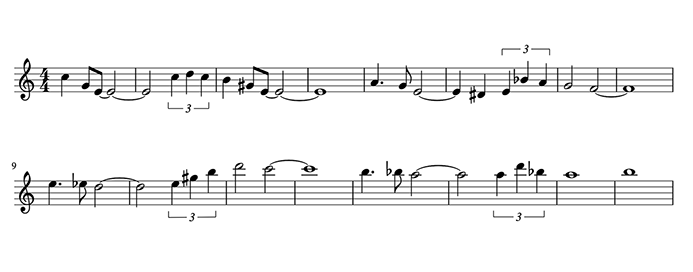
-In m.1 (measure 1), we see the 1/8 note on the upbeat (+) between beats 2 and 3. It then TIES to the following 1/2 note to fill the measure on beats 3 and 4. This 1/2 note holds even longer as it ties to that first 1/2 note of m.2.
-In m.2, we first have the 1/2 note, tied over from the previous measure. This 1/2 note occupies beats 1 and 2 of this measure of common time (4/4). In order to fit 3 notes in the space remaining (beats 3 and 4), we must use the QUARTER NOTE TRIPLET. We will make each of these three 1/4 notes slightly shorter and place them evenly over the two remaining beats.
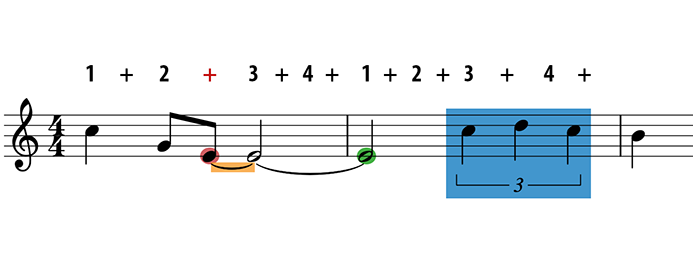
"AU PRIVAVE"
(Charlie "Bird" Parker)
Below, we have the full 12 bars of "Au Privave".
This piece is riddled with syncopation!
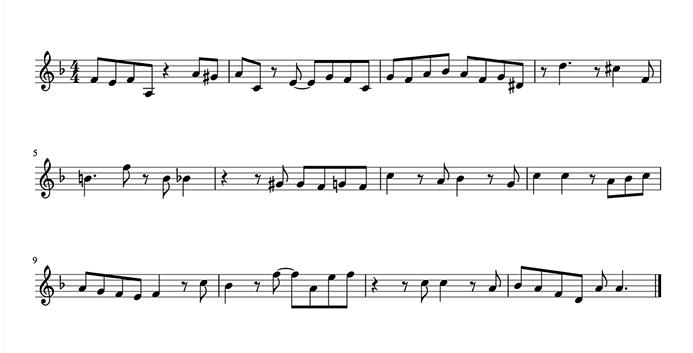
-Measure 1 begins with 4 consecutive 1/8 notes occupying beats 1 and 2, in common time. No problem. Then we have a 1/4 rest on beat 3. The melody picks back up on beat 4
(a weak beat) and continues on to beat 1 of the following measure. The introduction of a melodic theme on a weak beat presents a bit of rhythmic chaos. This effect is also used in m.2, where the melody resumes on the UPBEAT of a weak beat (beat 2) and ties over to a strong beat. Thusly, a new note is not played on the strong beat. This makes an otherwise common time and beat sound kind of uncommon.

-Measure 4 begins with an 1/8 rest. The following dotted quarter note occurs on the upbeat of 1. This begins a sequence of notes that all occur on the upbeat.
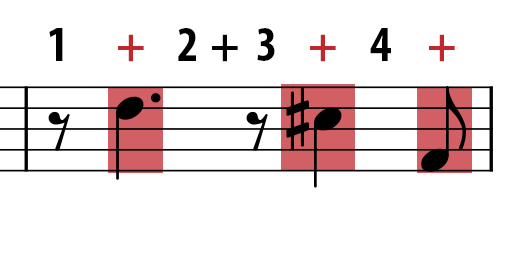
"SO WHAT"
(Miles Davis)
Below, we have the first 8 bars of "So What".
Again, we have two different syncopations (occurring in the first two measures) that present the "call and response" feel of this jazz standard.
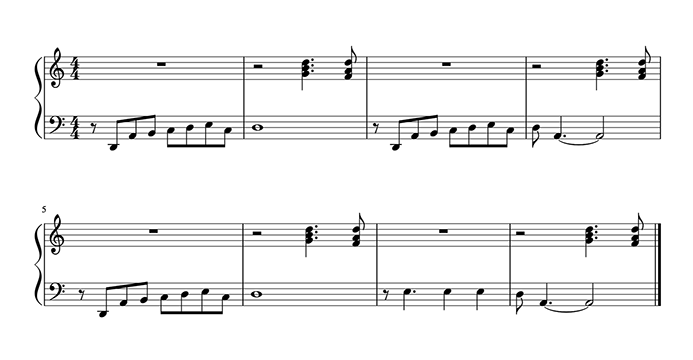
-In m.1, we see an 1/8 rest on the DOWN BEAT of beat 1. The melody begins on the upbeat of beat 1.
-In m.2, we see the Dm chord on the upbeat of the beat 4.

"TAKE 5"
(Paul Desmond)
It should be noted that, in the show, we said this was in 5/8. Because it is actually in 5/4, the 1/16 note on the upbeat we mentioned was actually an 1/8 note.
Below, we have the first 2 bars of the iconic bass line for "Take 5". This bass line features a solid two 1/8 notes on beat 1. Beat 2, however, begins with an 1/8 rest, before it continues the less syncopated pattern to finish out the measure.

-For a good read on busking, on line courses and some musings on economic considerations for musicians (on the giving and receiving end), check out this article by our own Andy Fuller, "Playing and Teaching as a Gift"

